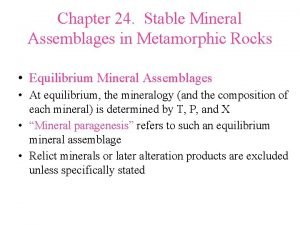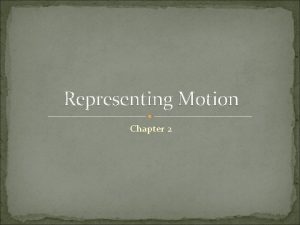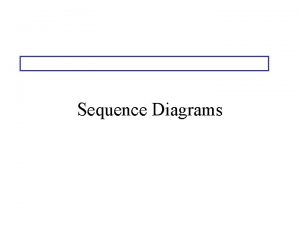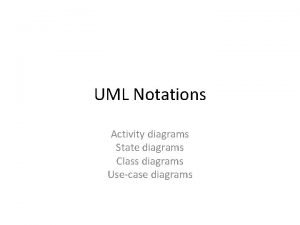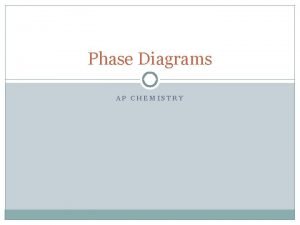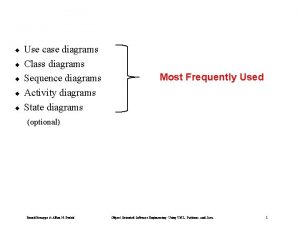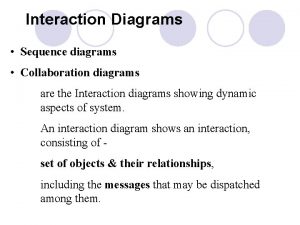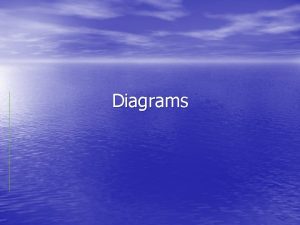Chemographic Diagrams Reading Winter Chapter 24 Chemographic Diagrams

















- Slides: 17

Chemographic Diagrams Reading: Winter, Chapter 24

Chemographic Diagrams • Most common natural rocks contain the major elements: Si. O 2, Al 2 O 3, K 2 O, Ca. O, Na 2 O, Fe. O, Mg. O, Mn. O and H 2 O such that C = 9 • Three components is the maximum number that we can easily deal with in two dimensions • What is the “right” choice of components? • We turn to the following simplifying methods:

Rules 1) Simply “ignore” some components – Trace elements – Elements that enter only a single phase (we can drop both the component and the phase without violating the phase rule) – Perfectly mobile components

More Rules 2) Combine components – Components that substitute for one another in a solid solution: (Fe + Mg) 3) Limit the types of rocks to be shown – Only deal with a sub-set of rock types for which a simplified system works 4) Use projections

The ACF Diagram • Illustrate metamorphic mineral assemblages in mafic rocks on a simplified 3 -C triangular diagram • Concentrate only on the minerals that appeared or disappeared during metamorphism, thus acting as indicators of metamorphic grade

Figure 24 -4. After Ehlers and Blatt (1982). Petrology. Freeman. And Miyashiro (1994) Metamorphic Petrology. Oxford.

The ACF Diagram • The three pseudo-components are all calculated on an atomic basis: A = Al 2 O 3 + Fe 2 O 3 - Na 2 O - K 2 O C = Ca. O - 3. 3 P 2 O 5 F = Fe. O + Mg. O + Mn. O

The ACF Diagram A = Al 2 O 3 + Fe 2 O 3 - Na 2 O - K 2 O Why the subtraction? • Na and K in the average mafic rock are typically combined with Al to produce Kfs and Albite • In the ACF diagram, we are interested only in the other Kbearing metamorphic minerals, and thus only in the amount of Al 2 O 3 that occurs in excess of that combined with Na 2 O and K 2 O (in albite and K-feldspar) • Since the ratio of Al 2 O 3 to Na 2 O or K 2 O in feldspars is 1: 1, we subtract from Al 2 O 3 an amount equivalent to Na 2 O and K 2 O in the same 1: 1 ratio

The ACF Diagram C = Ca. O - 3. 3 P 2 O 5 F = Fe. O + Mg. O + Mn. O

The ACF Diagram By creating these three pseudo-components, Eskola reduced the number of components in mafic rocks from 8 to 3 • Water is omitted under the assumption that it is perfectly mobile • Note that Si. O 2 is simply ignored – This is equivalent to projecting from quartz • In order for a projected phase diagram to be truly valid, the phase from which it is projected must be present in the mineral assemblages represented

The ACF Diagram An example: • Anorthite Ca. Al 2 Si 2 O 8 • A = 1 + 0 - 0 = 1, C = 1 - 0 = 1, and F = 0 • Provisional values sum to 2, so we can normalize to 1. 0 by multiplying each value by ½, resulting in A = 0. 5 C = 0. 5 F = 0

Figure 24 -4. After Ehlers and Blatt (1982). Petrology. Freeman. And Miyashiro (1994) Metamorphic Petrology. Oxford.

A typical ACF compatibility diagram, referring to a specific range of P and T (the kyanite zone in the Scottish Highlands) After Turner (1981). Metamorphic Petrology. Mc. Graw Hill.

The AKF Diagram Because pelitic sediments are high in Al 2 O 3 and K 2 O, and low in Ca. O, Eskola proposed a different diagram that included K 2 O to depict the mineral assemblages that develop in them • In the AKF diagram, the pseudo-components are: A = Al 2 O 3 + Fe 2 O 3 - Na 2 O - K 2 O - Ca. O K = K 2 O F = Fe. O + Mg. O + Mn. O

Figure 24 -6. After Ehlers and Blatt (1982). Petrology. Freeman.

AKF compatibility diagram (Eskola, 1915) illustrating paragenesis of pelitic hornfelses, Orijärvi region Finland Figure 24 -7. After Eskola (1915) and Turner (1981) Metamorphic Petrology. Mc. Graw Hill.

Notice that three of the most common minerals in metapelites andalusite, muscovite, and microcline, all plot as distinct points in the AKF diagram • Andalusite and muscovite plot as the same point in the ACF diagram, and microcline wouldn’t plot at all, making the ACF diagram much less useful for pelitic rocks that are rich in K and Al Figure 24 -7. After Ehlers and Blatt (1982). Petrology. Freeman.
 Acf and akf diagrams
Acf and akf diagrams Winter kommt winter kommt flocken fallen nieder
Winter kommt winter kommt flocken fallen nieder Winter kommt flocken fallen nieder
Winter kommt flocken fallen nieder Es war eine mutter
Es war eine mutter Pre reading while reading and post reading activities
Pre reading while reading and post reading activities Use case model
Use case model Activity diagrams are static diagrams
Activity diagrams are static diagrams Round robin reading vs popcorn reading
Round robin reading vs popcorn reading What are the aims of teaching reading
What are the aims of teaching reading Intensive reading in communication skills
Intensive reading in communication skills Edb net section
Edb net section It is an active process of discovery.
It is an active process of discovery. Intensive reading and extensive reading
Intensive reading and extensive reading Extensive reading
Extensive reading Ineffictive
Ineffictive Wiring
Wiring Chapter 2 visual 1 motion diagrams
Chapter 2 visual 1 motion diagrams Winter poem with simile and metaphor
Winter poem with simile and metaphor
